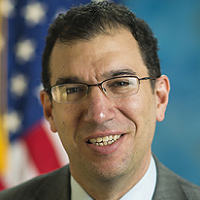 By Karen B. DeSalvo, M.D., M.P.H., M.Sc., and
By Karen B. DeSalvo, M.D., M.P.H., M.Sc., and
Andy Slavitt/ Acting Administrator, CMS
Seven years ago, Congress passed a law to spur the country to digitize the health care experience for Americans and connect doctor’s practices and hospitals, thereby modernizing patient care through the Electronic Health Records (EHRs) Incentive Programs, also known as “Meaningful Use.” Before this shift began, many providers did not have the capital to invest in health information technology and patient information was siloed in paper records. Since then, we have made incredible progress, with nearly all hospitals and three-quarters of doctors using EHRs. Through the use of health information technology, we are seeing some of the benefits from early applications like safe and accurate prescriptions sent electronically to pharmacies and lab results available from home. But, as many doctors and patients will tell you (and have told us), we remain a long way from fully realizing the potential of these important tools to improve care and health.
 That is why, as we mentioned earlier this year, we have conducted a review of the Meaningful Use Program for Medicare physicians as part of our implementation of the Medicare Access and CHIP Reauthorization Act (MACRA), with the aim of reconsidering the program so we could move closer to achieving the full potential health IT offers.
That is why, as we mentioned earlier this year, we have conducted a review of the Meaningful Use Program for Medicare physicians as part of our implementation of the Medicare Access and CHIP Reauthorization Act (MACRA), with the aim of reconsidering the program so we could move closer to achieving the full potential health IT offers.
Over the last several months, we have made an unprecedented commitment to listening to and learning from physicians and patients about their experience with health information technology – both the positive and negative. We spoke with over 6,000 stakeholders across the country, including clinicians and patients, in a variety of local communities. Today, based on that feedback, we are proposing to incorporate the program in to the Merit-based Payment System (MIPS) in a way that makes it more patient-centric, practice-driven and focused on connectivity. This new program within MIPS is named Advancing Care Information.
What We’ve Learned
In our extensive sessions and workshops with stakeholders, a near-universal vision of health information technology surfaced: Physicians, patients, and other clinicians collaborating on patient care by sharing and building on relevant information.
Three central priorities to address moving forward:
- Improved interoperability and the ability of physicians and patients to easily move and receive information from other physician’s systems;
- Increased flexibility in the Meaningful Use program; and
- User-friendly technology designed around how a physician works and interacts with patients.
This feedback created a blueprint for how we go forward to replace Meaningful Use program for Medicare physicians with a more flexible, outcome-oriented and less burdensome proposal.
How We’re Moving Forward
Our goal with Advancing Care Information is to support the vision of a simpler, more connected, less burdensome technology. Compared to the existing Medicare Meaningful Use program for physicians, the new approach increases flexibility, reduces burden, and improves patient outcomes because it would:
- Allow physicians and other clinicians to choose to select the measures that reflect how technology best suits their day-to-day practice
- Simplify the process for achievement and provide multiple paths for success
- Align with the Office of the National Coordinator for Health Information Technology’s 2015 Edition Health IT Certification Criteria
- Emphasize interoperability, information exchange, and security measures and require patients to access to their health information through of APIs
- Simplify reporting by no longer requiring all-or-nothing EHR measurement or quality reporting
- Reduce the number of measures to an all-time low of 11 measures, down from 18 measures, and no longer require reporting on the Clinical Decision Support and the Computerized Provider Order Entry measures
- Exempt certain physicians from reporting when EHR technology is less applicable to their practice and allow physicians to report as a group
A full list of the operational differences included in this new proposal is available here, along with more details on how it would work.
These improvements should increase providers’ ability use technology in ways that are more relevant to their needs and the needs of their patients. Previously established requirements for APIs in the newly certified technology will open up the physician desktop to allow apps, analytic tools, and medical devices to plug and play. Through this new direction, we look forward to developers and entrepreneurs taking the opportunity to design around the everyday needs of users, rather than designing to a one-size-fits-all approach. Already, developers that provide over 90 percent of electronic health records used by U.S. hospitals have made public commitments to make it easier for individuals to access their own data; not block information; and speak the same language. CMS and ONC will continue to use our authorities to eliminate barriers to interoperability.
Under the new law, Advancing Care Information would affect only Medicare payments to physician offices, not Medicare hospitals or Medicaid programs. We are already meeting with hospitals to discuss potential opportunities to align the programs to best serve clinicians and patients, and will be engaging with Medicaid stakeholders as well.
This proposal, if finalized, would replace the current Meaningful Use program and reporting would begin January 1, 2017, along with the other components of the Quality Payment Program. Over the next 60 days, the proposal will be available for public comment. We will continually revise and improve the program as we gather feedback from patients and physicians providing and receiving care under the Advancing Care Information category – and the Quality Payment Program as a whole. We look forward to hearing from you and working together to continue making progress in the coming months and years.
This post was originally published on the Health IT Buzz and is syndicated here with permission.
